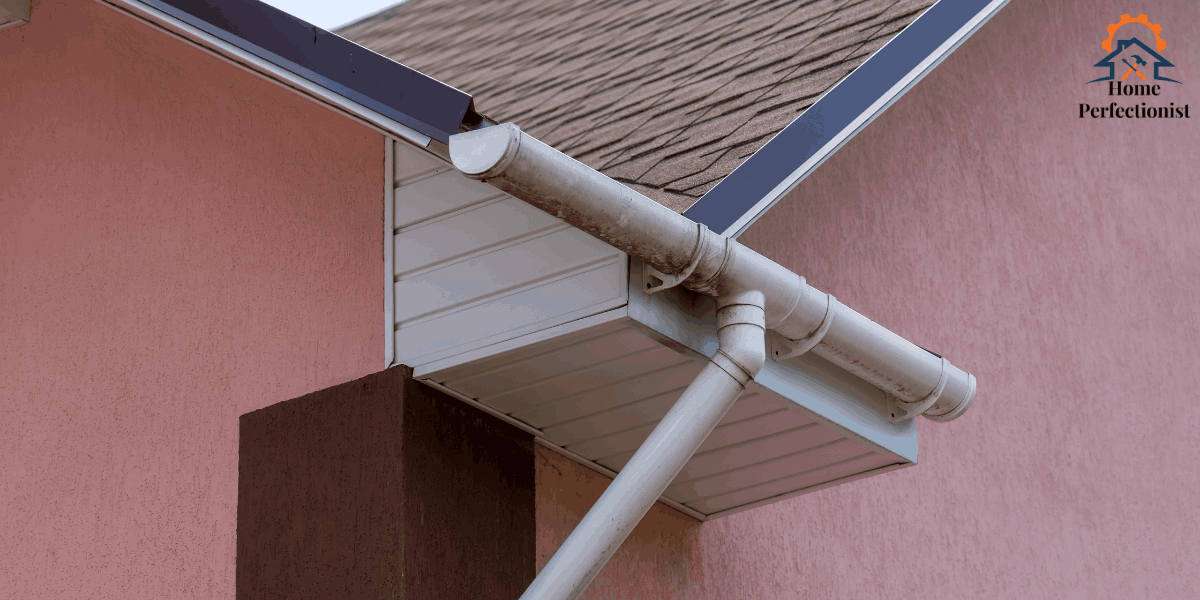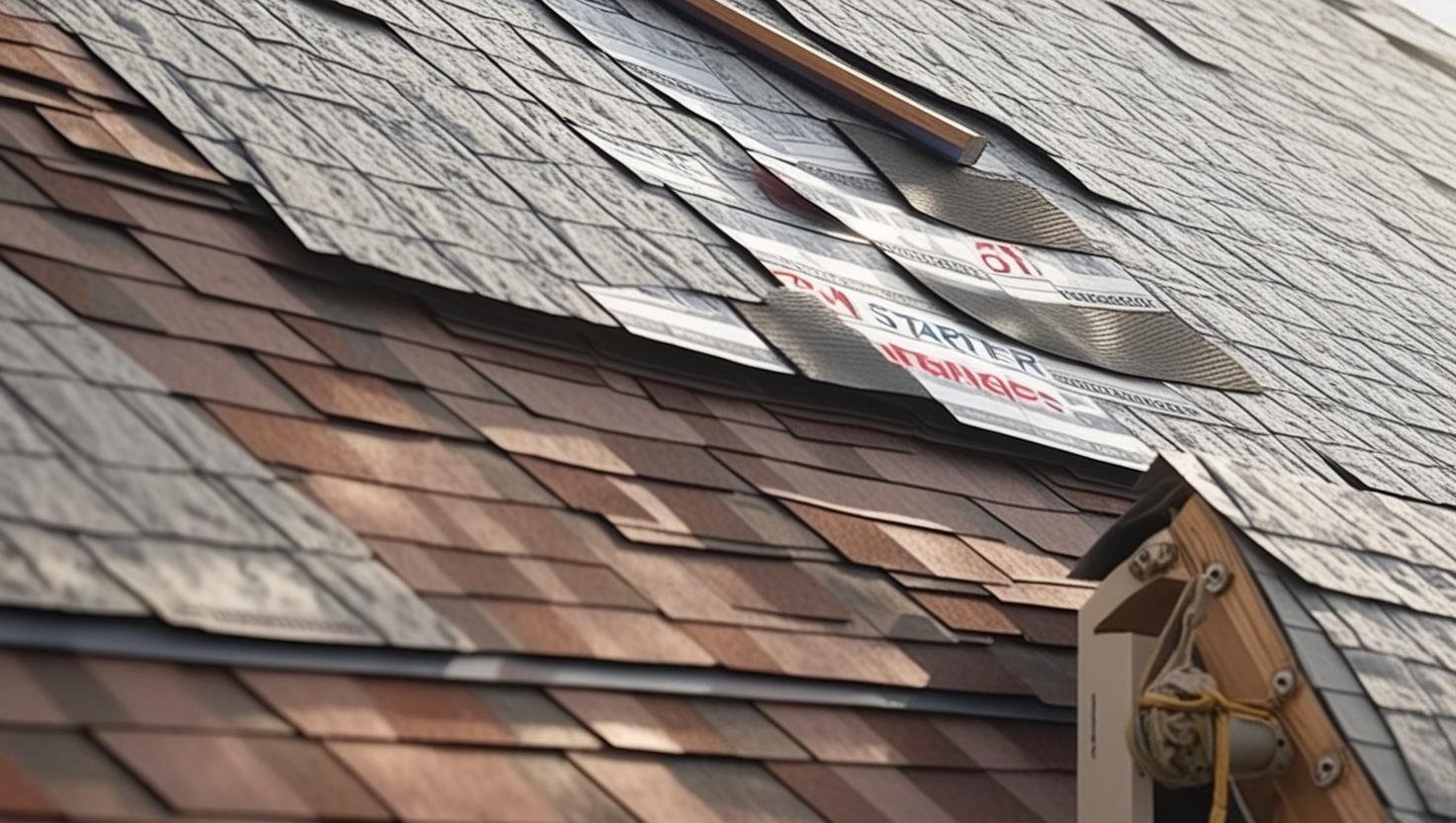The Essential Role of Fascia Drip Edge: Protecting Your Roof and Home!
Table of Contents
ToggleThe drip edge is a small but crucial component when protecting your roof and home. This metal flashing is installed along the roof’s edges to direct water away, ensuring proper drainage and preventing moisture-related damage. Without it, water can seep under the shingles, causing rot, mold, and even structural issues.
Beyond functionality, drip edges also enhance your home’s exterior by creating a clean, finished look. With various color and material options available—such as black, white, aluminum, and copper—homeowners can choose a style that complements their home’s design.
Roofing experts agree that installing a drip edge is vital in prolonging your roof’s lifespan and avoiding costly repairs. It works hand in hand with gutters, guiding rainwater away from your siding, porch, and foundation. Whether you’re building a new home or upgrading your existing roof, paying attention to this detail is a wise investment in protecting your property.
Understanding the Purpose of a Drip Edge
A drip edge serves a dual purpose: it directs water away from the roof and prevents moisture from infiltrating vulnerable areas. Installed at the roof’s perimeter, this small but essential flashing protects the fascia, soffit, and foundation from water damage.
Drip edges are made from durable materials like galvanized steel, aluminum, and copper, each offering different strength and corrosion resistance levels. Their design prevents wind-driven rain from seeping under shingles and ensures that runoff flows directly into the gutters, reducing the risk of rot, leaks, and structural deterioration.
Many local building codes, including the International Residential Code (IRC) Section R905.2.8.5, require a drip edge installation for asphalt shingle roofs. Compliance with these regulations protects your home and extends the life of your roofing materials.
Is a Drip Edge Necessary? Absolutely! Here’s Why
- Prevents fascia and soffit damage: Directing water away from the fascia prevents wood rot, staining, and warping caused by excess moisture.
- Blocks pest intrusion: A drip edge covers the gap between the roof deck and fascia, preventing insects, rodents, and other pests from entering your attic.
- Keeps your porch dry: Rainwater can run off the roof and onto your porch or deck without a drip edge, leading to premature wear.
- Strengthens roof stability: Drip edges help maintain the integrity of your roofing system by reducing exposure to wind and moisture.
- Reduces ice dam formation: In colder climates, drip edges help prevent ice dams by ensuring proper runoff, reducing the risk of ice buildup and water infiltration.
- Protects your foundation and basement: By directing water away from the house, a drip edge minimizes the chances of foundation erosion and basement leaks.

How Does a Drip Edge Work?
A drip edge is designed to direct water runoff from the fascia and into the gutter, preventing it from seeping under the roof’s layers.
- Made from aluminum, copper, or galvanized steel, it is shaped to create a slight overhang at the roof’s edge.
- The flange on the drip edge ensures that water flows into the gutter, stopping it from running down the siding or pooling around the foundation.
- Proper installation also helps maintain ventilation and prevents trapped moisture, which can lead to mold and premature roof decay.
Installing a drip edge is a simple yet effective way to enhance your roof’s longevity for new construction or retrofitting an existing roof.
Common Drip Edge Installation Mistakes and How to Avoid Them
Even though installing a drip edge may seem straightforward, mistakes can lead to serious issues like water infiltration, roof damage, and structural decay. Understanding these common errors can help homeowners and contractors ensure a proper, long-lasting installation.
1. Incorrect Drip Edge Placement
- Mistake: Place the drip edge under the underlayment instead of over it.
- Why It’s a Problem: Water can seep beneath the underlayment, leading to leaks and wood rot.
- Solution: Always install the drip edge over the underlayment along the eaves and beneath the underlayment on the rakes for optimal water protection.
2. Using the Wrong Type of Drip Edge
- Mistake: Choosing a drip edge that does not match the roof’s design or weather conditions.
- Why It’s a Problem: Certain types, like Type C, may not provide sufficient water redirection in areas prone to heavy rain or wind-driven moisture.
- Solution: Consider Type D (T-style) or Type F (gutter apron) for better performance, especially in wet or storm-prone regions.
3. Inadequate Fastening
- Mistake: Using too few nails or improper spacing when securing the drip edge.
- Why It’s a Problem: Loose or missing fasteners can cause the drip edge to shift, reducing its effectiveness in channeling water.
- Solution: Secure the drip edge with roofing nails every 12 inches and ensure they are placed correctly along the flange.
4. Insufficient Overhang
- Mistake: Installing the drip edge flush with the fascia instead of extending it beyond the roof’s edge.
- Why It’s a Problem: Water may run behind the gutters, damaging the fascia and soffit.
- Solution: Ensure the drip edge extends at least ½ inch beyond the roof deck to direct water into the gutters properly.
5. Not Sealing Joints and Corners Properly
- Mistake: Failing to overlap drip edge sections correctly or neglecting to seal corners.
- Why It’s a Problem: Gaps between sections can allow water intrusion, leading to leaks and rot.
- Solution: Overlap drip edge pieces by at least one inch and use roofing sealant at joints and corners for added protection.
6. Ignoring Local Building Codes
- Mistake: Skipping necessary code requirements for drip edge installation.
- Why It’s a Problem: Non-compliance may lead to failed inspections, voided warranties, or reduced roof lifespan.
- Solution: Always check local building codes and ensure the drip edge meets the International Residential Code (IRC) standards.

Step-by-Step Guide to Installing a Fascia Drip Edge
Tools and Materials Needed
- Drip edge flashing
- Roofing nails
- Hammer or nail gun
- Tin snips
- Ladder
- Flat pry bar
Installation Steps
- Prepare the roof
Clear any debris from the roof decking and ensure the fascia is in good condition. - Position the drip edge.
Place the drip edge along the eaves of the roof. The flange should angle downward and slightly away from the fascia. - Secure with roofing nails.s
Nail the drip edge every 12 inches, ensuring each nail is covered by shingles for a seamless look. - Cut and adjust for corner.s
Use tin snips to trim the drip edge at the corners, ensuring a snug fit where the two sections meet. - Ensure proper overlap
Overlap the drip edge pieces for long roof sections by at least an inch to prevent water gaps. - Install the drip edge along the rakes.
After placing the underlayment, install a drip edge along the rakes (sloped edges) to further protect against wind-driven rain. - Final checks
Ensure all sections are aligned and secured. Trim excess metal if needed for a clean finish.
Replacing a Drip Edge on an Existing Roof
If your current drip edge is damaged or improperly installed, replacing it is essential for protecting your home.
4 Easy Steps to Replace a Drip Edge
- Remove the old drip edge
Gently lift the shingles and use a pry bar to remove the nails holding the old flashing in place. - Clean the area
Clear debris or leftover sealant to create a smooth surface for the new drip edge. - Install the new drip edge.
Slide the new drip edge under the shingles and secure it with roofing nails, spacing them every 12 inches. - Seal and secure
If needed, apply roof flashing or sealant to reinforce the new drip edge, ensuring water flows into the gutters.

Drip Edge Maintenance: Ensuring Long-Term Protection
Proper maintenance of your drip edge is essential for ensuring long-term roof protection. While this component is designed for durability, regular inspections and upkeep can prevent minor issues from escalating into costly repairs.
How to Maintain a Drip Edge
- Inspect Regularly
At least twice a year—preferably in spring and fall—check your drip edge for any signs of damage, such as rust, cracks, or misalignment. Look for water stains or rotting wood near the fascia, which could indicate improper drainage. - Clear Debris
Leaves, dirt, and other debris can accumulate around the drip edge and in gutters, blocking water flow. Clean these areas regularly to ensure proper drainage and prevent moisture buildup. - Check for Loose or Missing Nails
Over time, roofing nails securing the drip edge can loosen due to wind and temperature changes. Ensure all fasteners are intact and replace any missing ones to maintain structural integrity. - Seal Any Gaps
Small gaps or separations between the drip edge and roof deck can allow water infiltration. Apply roofing sealant to these areas to reinforce protection and keep moisture out. - Monitor for Rust or Corrosion
Check for rust spots if your drip edge is made of galvanized steel or another metal. Minor corrosion can be treated with a rust-resistant primer, while extensive damage may require a complete replacement. - Ensure Proper Overhang and Alignment
The drip edge should slightly extend beyond the fascia and direct water into the gutters. The drip edge may need adjustment or replacement if water is dripping behind the gutters.
When to Replace a Drip Edge
It may be time for a replacement if you notice persistent water damage, significant rust, or separation from the roof structure. Addressing these issues early can prevent further damage to your roof deck, soffit, and fascia.
Professional vs. DIY Maintenance
While homeowners can do basic cleaning and inspections, any necessary repairs or replacements should be handled by a roofing professional. They can ensure proper installation and compliance with local building codes, protecting your home from future issues.
Types of Drip Edges and Materials
Common Drip Edge Styles
- Type C: A simple 90-degree bend, ideal for roofs without fascia.
- Type D (T-Style): Features a wider flange for better water direction, great for areas with heavy rain.
- Type F (Gutter Apron): Has an extended leading edge, perfect for retrofitting over existing shingles.
Material Options
- Aluminum: Lightweight, rust-resistant, and available in various colors.
- Copper: Elegant and long-lasting, with a natural patina that enhances aesthetics.
- Galvanized steel: Extremely durable and resistant to harsh weather.
- Vinyl: Affordable and low-maintenance, best for modern homes.
Why Professional Installation Matters
While a drip edge installation may seem straightforward, improper placement can lead to leaks, wood rot, and costly repairs. Hiring a professional roofer ensures:
- Correct installation angles for optimal water flow
- Compliance with local building codes
- Proper sealing to prevent future leaks
- Long-term protection for your home’s structure
If you’re replacing an old drip edge or installing a new one, working with an expert ensures the job is done correctly and efficiently.
Final Thoughts: Why a Drip Edge is Essential
A fascia drip edge is more than just a piece of metal—it’s a critical component that safeguards your home from moisture damage, pest intrusion, and foundation issues.
By choosing the right material and ensuring proper installation, you can:
- Prevent water damage and wood rot
- Improve roof ventilation and durability
- Reduce the risk of ice dams in winter
- Enhance your home’s curb appeal
Whether installing a new roof or upgrading an existing one, a well-installed drip edge is a small investment that provides significant benefits. Don’t overlook this crucial element—your home will thank you!
Fascia Drip Edge: (FAQs)
1. Is a drip edge required by building codes?
In most areas, building codes require a drip edge for asphalt shingle roofs. The International Residential Code (IRC) Section R905.2.8.5 mandates drip edges at eaves and rakes to prevent water infiltration and extend the lifespan of roofing materials. Always check local regulations to ensure compliance.
2. Can I install a drip edge on an existing roof?
Yes, a drip edge can be added to an existing roof, though it may require lifting the shingles carefully to slide the new drip edge into place. Professional installation is recommended to avoid damage if shingles are brittle or adhered tightly.
3. What is the best material for a drip edge?
The best material depends on your climate and budget. Aluminum is lightweight and corrosion-resistant, galvanized steel is highly durable, and copper offers a premium, long-lasting aesthetic. Vinyl is affordable but may not be as durable in extreme weather conditions.
4. How far should a drip edge extend past the fascia?
A properly installed drip edge should extend at least ½ inch past the fascia to ensure water flows directly into the gutters rather than running behind them. This prevents water damage to the fascia, soffit, and foundation.
5. What is the difference between a drip edge and a gutter apron?
A drip edge is a metal flashing installed along the roof edge to direct water away from the fascia and into the gutter. A gutter apron (Type F drip edge) extends further into the gutter, making it ideal for retrofitting over existing shingles or roofs with larger overhangs. Both serve the same purpose but vary in design and application.
🔨 Thinking about installing or replacing a drip edge? Contact a roofing professional today to ensure your home stays protected for years.



